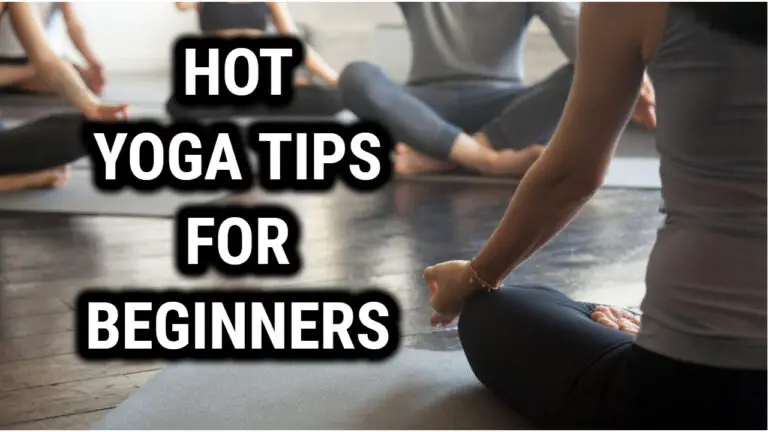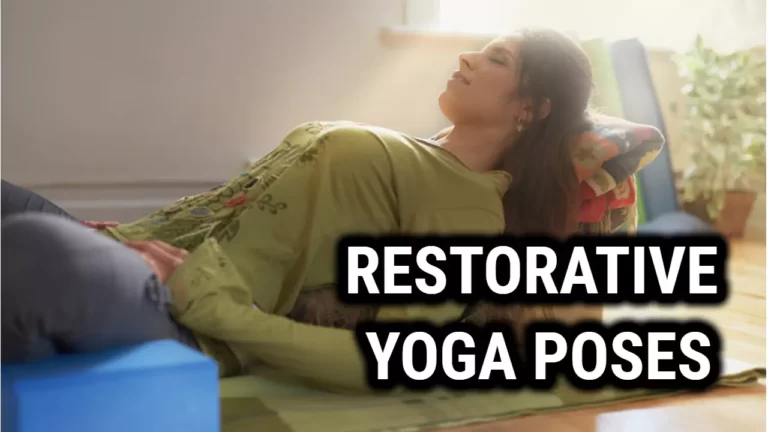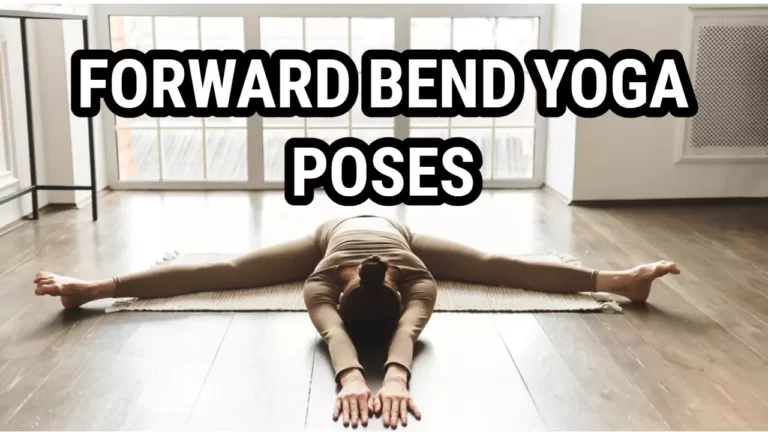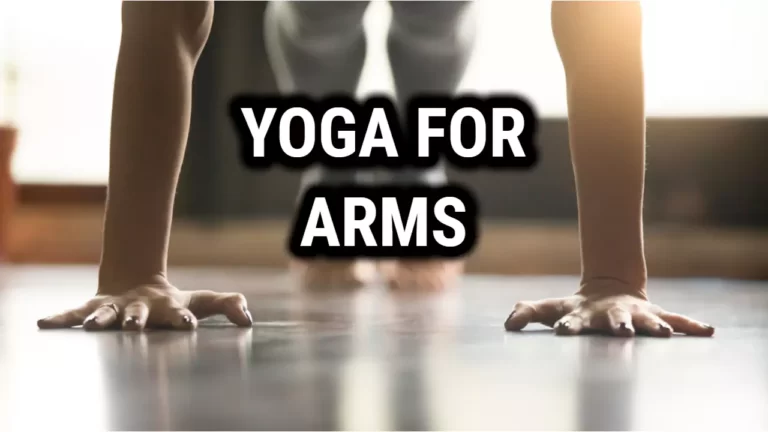How To Choose the Right Yoga Mat

Yoga is an ancient practice that has been around for centuries, and it’s become increasingly popular in modern times. It can help improve physical health, mental clarity and emotional well-being. One of the most important elements of a successful yoga practice is having the right equipment, and one of the most important pieces of equipment is a yoga mat.
Choosing the right mat can be an overwhelming task, but with a little knowledge and guidance you can find the perfect mat for your practice. As a certified yoga instructor I’m here to provide you with some tips on how to choose the right yoga mat so that you can get the most out of your practice!
First things first: consider what type of yoga you’ll be doing. Different styles require different levels of support and cushioning. For example, if you’re practicing Bikram or asthanga yoga, which involves vigorous movement and stretching, look for mats that are thicker and have more cushioning than those used for gentler practices like yin or restorative yoga. This will help ensure that your joints are supported during more intense poses.
Second, think about what kind of material your mat should be made from. The two most common types are PVC (polyvinyl chloride) or TPE (thermoplastic elastomer). PVC mats tend to be slightly less expensive, but they also contain toxic chemicals like phthalates which may not be good for your health over time.
TPE mats are non-toxic and recyclable so they’re a great eco-friendly choice. They also tend to be softer and more durable than PVC mats so they’ll last longer in the long run.
Types Of Yoga Mats
When it comes to choosing the right yoga mat, there are many yoga mat types to choose. From rubber mats to travel mats to thinner mats, there’s something for everyone.
1. Natural Rubber Yoga Mats: These are the most popular type of yoga mats and are made from natural rubber. They provide excellent cushioning and grip, making them ideal for all types of yoga classes and practice. Most of the yoga studios provide this type of mat.
2. PVC Yoga Mats: These yoga mats are made from PVC, which is a synthetic plastic material. They are lightweight and provide good cushioning, making them suitable for all types of yoga practice.
3. Cork Yoga Mats: These yoga mats are made from cork, which is a natural, renewable material. They provide good cushioning and grip and are eco-friendly.
4. TPE Yoga Mats: These yoga mats are made from thermoplastic elastomer, which is a man-made rubber material. They are lightweight and provide good cushioning, making them suitable for all types of yoga practice.
5. Jute Yoga Mats: These yoga mats are made from jute, which is a natural, renewable material. They provide good cushioning and grip and are eco-friendly.
Characteristics To Consider

When selecting a yoga mat, it’s important to consider several factors. After all, your practice is as unique as you are. Carefully assessing the characteristics of the mats available will help you find one that suits your individual needs.
First, think about the type of yoga you’ll be doing. Different types of yoga require different levels of grip and cushioning. For instance, a more vigorous practice such as vinyasa flow may require more traction than a gentler style like yin yoga.
Additionally, if you plan to do both dry and wet practices, look for a mat that offers good hold even when dampened with sweat or water.
Once you’ve determined the level of grip and cushioning needed for your particular practice, it’s time to move on to thickness and support.
Support And Yoga Mat Thickness
When choosing a yoga mat, you’ll want to consider the thickness and support it provides. Mat thickness can range from 3mm to 6mm or thicker. A thick yoga mat is great for cushioning your joints, while a thinner one may be better for stability during balances.
Thicker mats are usually best for those with sensitive joints, but if you’re looking for a heavier practice or prefer more contact with the ground, then a thinner mat is probably the way to go.
Knowing how much cushion and support you need will help you decide which mat is right for you. If your practice involves a lot of standing poses, then you might opt for a thicker mat. If you’re doing more seated or reclined poses, then something on the thinner side would likely be more comfortable.
Remember to also take into account how long your class tends to run as well—if it’s longer than an hour, then having extra cushioning can help prevent fatigue in your joints over time.
Durability and materials should also be taken into consideration when selecting the right yoga mat.
Do Read: Best Cork Yoga Mat Benefits: How Natural Materials Can Enhance Your Practice
Durability And Materials

When it comes to durability and materials, the right yoga mat can make all the difference in your practice. Before you decide on a mat, it’s important to consider its longevity and the type of material used. Back in the day, when yoga was first practiced, yogis used thick cotton mats that were hand-woven from natural sources like jute.
Today, with advanced technology, we have a wide range of yoga mats made from various materials including natural rubber and polyurethane foam.
Natural rubber is one of the most popular choices for yoga mats because it provides superior cushioning and grip for any practice. It’s also eco-friendly and more durable than other synthetic materials like PVC or TPE. Jute yoga mats are also an excellent choice as they’re made from renewable resources, provide great traction support, and are naturally antimicrobial.
Ultimately, choosing the right material depends on your individual needs – a combination of comfort level and durability should be taken into consideration when selecting a mat.
Also Read: Best Yoga Mats For Women
Cushioning And Comfort Level
When it comes to cushioning and comfort level, a yoga mat is an essential piece of equipment. It’s important to choose the right one for your practice. Here are some points to consider when selecting a mat:
- Thickness – Look for a yoga mat that provides enough cushioning for your joints without compromising your stability.
- Material – Choose a material that will be comfortable against your skin. Synthetic materials tend to be more durable and easy to clean than natural fibers.
- Grip – Make sure the mat provides enough traction so you don’t slip during poses or inversions.
- Durability – Consider how often you will be using the mat, as well as its intended purpose, before making a purchase.
These are all important factors when looking for a yoga mat that will provide optimal cushioning and comfort level. Now, let’s discuss stability and grip.
Stability And Grip

When choosing a yoga mat, stability and grip are key. It’s important to make sure your mat is thick enough to provide cushioning between your body and the floor, but not so thick that it causes you to wobble when transitioning between poses. A good rule of thumb is to look for a mat with a thickness of 1/8 inch or more.
If you are practicing on hardwood floors or other slippery surfaces, consider purchasing a sticky yoga mat which provides extra grip and traction. This will ensure that your practice stays safe and secure even during more challenging poses.
To summarize, when choosing the right yoga mat, you want something that offers both stability and grip. The right combination of thickness and material will ensure your practice remains safe and effective. With this in mind, let’s move onto another important factor: size and weight.
Size And Weight
Choosing the right size and weight of a yoga mat is important. When selecting a size, you should take into account your body length, as well as the type of poses and movements you’ll be doing in your practice.
If you’re taller than 6 feet, for example, a longer mat would be beneficial for providing extra support for your limbs. However, if you’re just starting out in yoga and plan to do more sitting or balancing poses, a standard-length mat will suffice.
When it comes to weight, try to select a lightweight mat that’s easy to carry in your hands or store in your yoga bag. Heavier mats are usually thicker and offer more cushioning and can be a great choice for those who prefer the feel of more padding under their feet.
But if you want something light enough to bring with you on the go or travel with, then opt for a thinner option – they’re also easier to fold up when not in use!
The importance of choosing an eco-friendly yoga mat cannot be overstated.
Eco-Friendliness
When selecting a yoga mat, eco-friendliness should be taken into account. Many mats are made of synthetic materials that can contain environmental toxins and degrade quickly. Natural rubber and cotton yoga mats are the most eco-friendly choices out there.
It’s important to look for a mat that is sustainably sourced with natural dyes, as this will reduce the amount of pollution created during production. Plus, you’ll be able to practice yoga in a more mindful way knowing your mat was produced in an environmentally responsible manner.
In addition to being eco-friendly, these materials also provide excellent grip and cushioning which is essential for a safe and comfortable practice.
Natural rubber provides an anti-slip surface while cotton mats offer softness but still allow you to feel rooted on the ground. Eco friendly yoga mats come in many styles, textures, and colors making them perfect for any type of practice.
Price range is another factor to consider when choosing the right yoga mat.
Price Range
When choosing a yoga mat, price can be an important factor to consider. It’s important to remember that a higher price does not always equate to a high-quality product. Although an expensive mat may offer the best durability and cushioning for your practice, you don’t necessarily have to break the bank to get the most out of your yoga practice. Here are some tips for selecting the best yoga mat for your budget:
- Choose one with good reviews from other yogis – Research is essential when it comes to finding a high-quality yoga mat that fits into your budget. Look for reviews from experienced yogis who have tried different types of mats and can offer helpful feedback on which ones are worth investing in.
- Look for sales or discounts – Many retailers offer sales or discounts on yoga mats throughout the year, so keep an eye out for these deals! This can be a great way to save money while still getting a good quality product.
- Consider buying used – Buying second-hand is another great option if you’re looking to save money while still getting a comfortable and durable mat. Always make sure that the mat is clean before using it.
It’s important to remember that when it comes to choosing the right yoga mat, there isn’t one size fits all solution. What works best for you will depend on your personal needs and preferences, as well as your budget. With careful research and consideration, you’ll be able to find the perfect mat for your practice without breaking the bank! Moving forward, understanding how to care for your new yoga mat is just as important as choosing one that fits your needs and budget.
Care Instructions
Caring for your yoga mat is essential if you wish to maintain its performance and longevity. Choosing the right yoga mat is important, but so is following the proper care instructions. With consistent care, your mat will continue to support your practice and provide superior cushioning for your body.
First and foremost, it’s important to cleanse your yoga mat regularly. Depending on how often you use it, aim to wipe down the surface of your mat with a damp cloth at least once a week. This will help remove sweat, dirt, dust, and bacteria that can accumulate over time.
Additionally, you may want to consider investing in an antibacterial spray specifically made for yoga mats or use a mild detergent mixed with warm water in order to keep it clean and free from germs.
Be sure to also store your mat in a safe place away from direct sunlight or moisture when not in use so as not to damage it. If you need to transport it, opt for a carrying strap or bag specifically designed for this purpose as opposed to an old towel or blanket which can cause abrasions and holes over time.
Taking these simple steps will ensure that your yoga mat remains in optimal condition so that you can enjoy many years of practice on a quality cushion.
Related Read: Best Yoga Mats For Hot Yoga – Don’t Miss Out
Frequently Asked Questions
What Are The Pros And Cons Of Different Yoga Mat Materials?
When it comes to yoga mats, there is a lot to consider. It’s important to know the pros and cons of different materials in order to make an informed decision. For example, PVC yoga mats are popular and can be quite inexpensive; however, they can contain toxins that are released into the atmosphere when heated during class.
On the other hand, rubber mats are more durable and provide better grip but may not be as comfortable for certain poses. Natural fiber mats like jute or cotton offer cushioning and breathability but may require more frequent cleaning than synthetic materials.
Ultimately, choosing the right yoga mat comes down to personal preference and individual needs. Everyone has different priorities when it comes to their practice, so it’s important to take your time when selecting a mat.
Think about how often you will use it, what types of poses you do most frequently, and what kind of environment you practice in before making your choice. After all, your mat should be an extension of yourself – so choose one that will best support you in your practice!
How Often Should I Replace My Yoga Mat?
Your yoga mat is the foundation of your practice! Replacing your yoga mat regularly can help you continue to get the most out of your yoga journey. But how often should you replace your mat? Let’s explore this topic together.
The frequency at which you should replace your mat will depend on a few factors, including the material it’s made from and how often you use it. Generally speaking, if you use a standard PVC mat, you’ll want to replace it every 6 months or so.
This is because these mats can begin to break down over time and lose their cushioning and grip capabilities. If you opt for a higher quality material such as rubber or cork, you may not need to replace it as often as they tend to be more durable.
Here are some tips for extending the life of your yoga mat:
- Clean it regularly using only water or a mild yoga mat cleaner
- Store it away from direct sunlight when not in use
- Use a towel overtop during sweaty practices
Remember – choosing the right yoga mat is an important part of your practice. Don’t be afraid to invest in one that will last longer and provide more comfort and stability in your poses. With regular care and maintenance, you’ll be able to find a yoga mat that suits both your needs and budget.
Is There A Difference In The Level Of Cushioning Provided By Different Yoga Mat Types?
Choosing the right yoga mat depends on the level of cushioning it provides. Foam mats are ideal for beginners, cork mats are lightweight and provide good grip, and rubber mats are suitable for more experienced yogis. Comfort is key when selecting the best mat, so try different types and thicknesses to find one that works best for your body and practice.
What Is The Best Way To Clean And Maintain My Yoga Mat?
Caring for a yoga mat is essential for longevity and effectiveness. Wipe it down with a damp cloth or paper towel after each use and use a light detergent and scrubbing brush for tougher stains. Rinse off any excess soap and allow the mat to air dry completely before rolling it up. Regular cleaning will help extend its lifespan.
Are There Specific Yoga Mats That Are Better Suited For Certain Styles Of Yoga?
When it comes to yoga mats, there are a few different factors to consider when choosing the right one for your practice. Are you looking for something that is suitable for all types of yoga, or do you want something specifically designed for a particular style?
Here’s what you should consider when selecting the perfect mat:
- Grip: A good yoga mat should provide enough grip so that your hands and feet don’t slip during postures. The amount of grip is determined by the material used, so make sure to check out how sticky it feels before purchasing.
- Thickness: If you’re new to yoga, then you’ll likely want a thicker mat to provide more cushioning and support during postures. As you become more experienced, you may opt for a thinner mat as it will help with balance and stability.
- Durability: Depending on how often you practice, investing in a durable mat can be a great option as it will last longer than other mats. However, if you’re just starting out then there’s no need to splurge on an expensive mat – just make sure to take proper care of it!
- Weight: If you plan on traveling with your yoga mat, then look for one that is lightweight and easy to carry around with you. You don’t want anything too heavy or bulky as this will be difficult to transport.
Whether you’re new to yoga or have been practicing for years, finding the right type of mat can make all the difference in your practice. Different mats may work better depending on which style of yoga you’re doing – if it’s Hatha or Vinyasa Flow then look for something grippy and thick; if it’s hot yoga then opt for something light and sweat-absorbent; and if it’s restorative then choose something comfortable with extra cushioning. Taking these factors into account will help ensure that the yoga mat you choose is just right for your needs!
Conclusion
As a certified yoga instructor, I have seen the importance of choosing the right yoga mat firsthand. Having the wrong mat can make it uncomfortable or even unsafe to practice certain poses and styles of yoga.
When selecting a yoga mat, it’s important to consider what type of material you want. You will also need to think about how often you plan on replacing your mat and how much cushioning you need. Additionally, being aware of the best way to clean and maintain your mat is essential for keeping it in top condition. Finally, there are certain mats that are better suited for specific types of yoga.
The average person goes through four yoga mats over their lifetime – so choose wisely! With all these things taken into consideration, you’ll be able to pick out the perfect mat for your practice and enjoy years of comfortable and safe yoga sessions.





